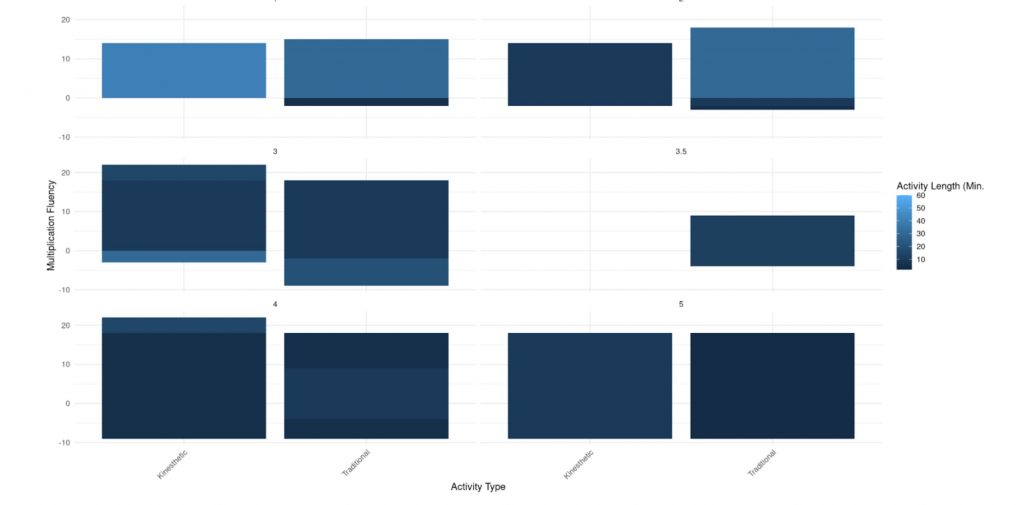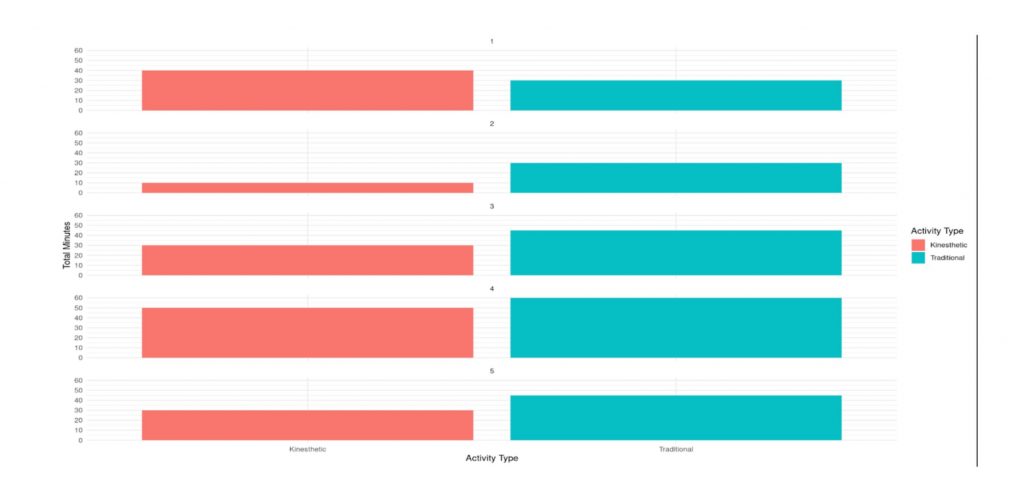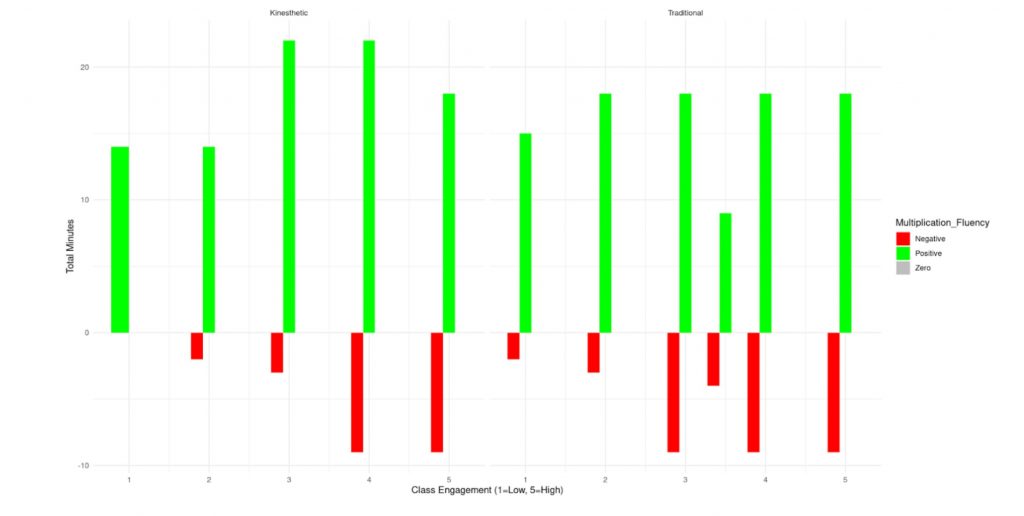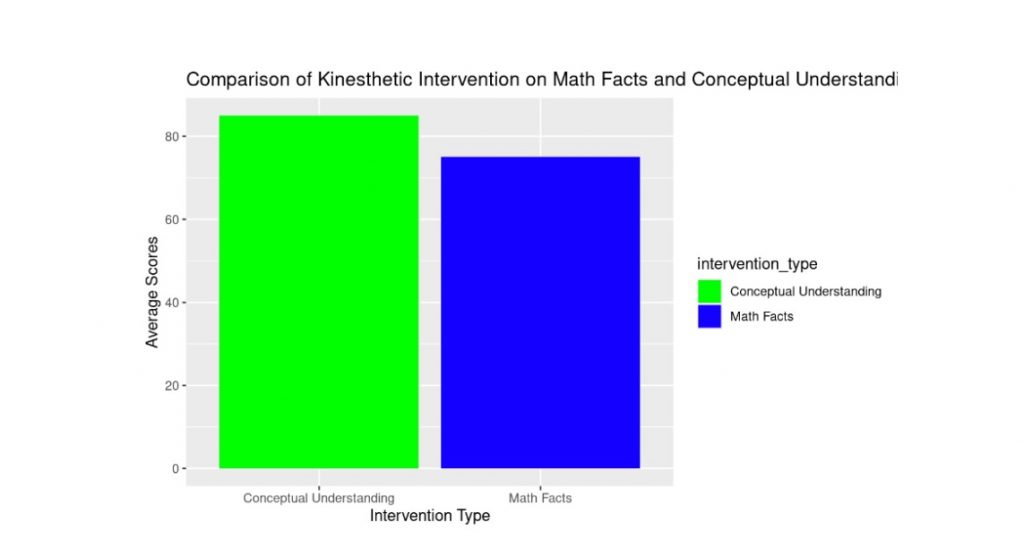
National Math Foundation Research
AUTHOR: MUSTAFA AL-BAYATI
Introduction
The Natural Math Foundation has initiated this research to address the potential impact of kinesthetic learning on math education. Kinesthetic learning emphasizes physical movement, touch, and other senses to enhance comprehension and memory retention. This report summarizes the research methodology, data collection, analysis techniques, and key findings of the study.
Methodology
The research followed a mixed-methods approach, incorporating both quantitative and qualitative data collection methods. The study was conducted with two groups: a control group using traditional teaching methods and an experimental group engaging in kinesthetic activities during math lessons.
Data Collection
Data was collected through pre- and post-tests to assess math learning outcomes. Additionally, qualitative data was gathered through surveys to gain insights into participants’ experiences and perceptions of kinesthetic learning.
Statistical Analysis
The collected data was subjected to thorough statistical analysis. Inferential statistics, including t-tests and ANOVA, were applied to determine the significance of differences in learning outcomes.
Figure 1: The Influence of kinesthetic activity have any impact on student overall multiplication fluency

The Graph above shows the multiplication fluency based on the activity type and whether students spent more or less time in these activities. As a general trend, there is similar time being spend on both kinesthetic and traditional although there is a gradual increase in the level of likeness by the students the longer they spend time in an activity. The multiplication Fluency seemed to be increasing the longer the activity is being performed.
Figure 2:The influence of the total minutes spent on kinesthetic activities compared to traditional activities which affected overall Class Engagement

According to the graph above there was a significant correlation between the amount of time being spent in traditional activities and how much students like the activity but on the other hand, there was more discrepancies that can also be explained through the teachers not doing the activities for longer periods. But it suggests that there is a positive correlation between the time being spent and the type of activity, which requires more exact study and research.
Figure 3: The Impact of student engagement on overall multiplication fluency_

According to the data being collected from the teachers on the data being provided before and after the test, student engagement had better results and more of a positive impact on multiplication fluency, especially in scenarios where kinesthetic was being applied.
Figure 4: Comparison of Kinesthetic intervention on Math facts and conceptual understanding

As for one of the understandings in this research when it comes to the impact of kinesthetic intervention which is mostly influential, the graph suggests that it helps more with conceptual understanding while also strengthening the math facts.
Findings
The statistical analysis yielded several noteworthy findings:
- Participants in the experimental group demonstrated statistically significant improvement in math learning outcomes compared to the control group.
- Qualitative data indicated that kinesthetic activities fostered engagement, enthusiasm, and a positive attitude toward math among participants.
- There was a correlation between the frequency of kinesthetic activities and the extent of learning improvement.
- In summary, the results of the paired t-test indicate that there is strong evidence to support the conclusion that the intervention or treatment had a significant positive effect on the student’s test scores. The average improvement in test scores after the treatment is estimated to be approximately 2.37 points, and we are 95% confident that the true population mean difference lies within the range of 2.01 to 2.74 points.
Implications
The results of this study have significant implications for math education and curriculum development. The findings suggest that integrating kinesthetic activities can enhance math learning outcomes and contribute to a more positive learning experience. Educators can consider incorporating kinesthetics as a tool to engage students and promote a deeper understanding of mathematical concepts.
Conclusion
This research has shed light on the positive influence of kinesthetics on math learning. The statistical analysis revealed that incorporating physical movement and sensory experiences can lead to improved math learning outcomes and increased enthusiasm for the subject. The findings of this study encourage further exploration of kinesthetic learning strategies in the realm of education.
Future Research
While this study provides valuable insights, future research could explore the long-term effects of kinesthetic learning on math retention. Additionally, investigating the underlying cognitive mechanisms responsible for the observed improvements would contribute to a deeper understanding of this pedagogical approach.
Comments:
- Having a larger focused sample on different types of learning to see the influence of individual’s methods to be able to conclude the accuracy of the results
- Having a better way of linking the data and having multiple factors or references to make data analysis and graphs more concise.
- Having a control and variable group would make the results more cut clearer than having more of a mixed environment.

Northfield Welcoming Study
Analyzing the population of Northfield
Introduction
We want to address how the sense of security is impacted by race in Northfield and whether or not Hispanic individuals in Northfield feel discriminated against because of their language. A scholarly article titled “I Will Never Forget That”: Lasting Effects of Language Discrimination on Language-Minority Children in Colombia and on the U.S.-Mexico Border” provides a wonderful example of why these questions should be answered. “I Will Never Forget That” looks into the importance of language and how it plays a larger role in one’s identity and culture and how the discrimination of a language, or linguicism, is closely related and often influences discrimination often seen involving race and ethnicity. They conclude that there is considerable evidence suggesting that linguicism coincides with racism and that it can have lasting effects on one’s sense of security and belonging.
Methods
The data we use to reach our conclusion is collected from a survey released by the Northfield Racial & Ethnic Equity Cooperative (NREEC). This survey is an attempt at measuring equity in the Northfield area and is targeted towards the entirety of the town. It addresses personal experiences and feelings/views regarding Northfield itself and separates those responses by their associated demographic variables. The survey was introduced to several Northfield outlets including both St. Olaf and Carleton Colleges, Community Action Center, and FiftyNorth. The outlets provided the survey for their employees and clients. The City of Northfield also allowed posters to be put up around town to allow residents who might not work in the area access to the survey. The city also utilized social media to promote awareness of the survey.
The null hypothesis for our first research question is: “Race has no impact on one’s sense of security.” Respectively, our alternative hypothesis is: “Race impacts one’s sense of security.” To form a reasonable response to this question, we compared the information from the question “What is your race and/or ethnicity?” with the responses to “I feel safe in Northfield.” We transferred these responses into numerical values so that we could easily identify a negative or positive relation between the two. The second question is outlined with the null hypothesis of “The Hispanic community in Northfield does not feel discriminated against because of their language.” and an alternative hypothesis of “The Hispanic community in Northfield feels discriminated against because of their language.” The research data used for this question is from the race and ethnicity question that was previously used above “Have you experienced discrimination based on your language or country of origin in Northfield in the past 12 months?” We filtered out any data that was not associated with a Hispanic individual to ensure the use of only relevant information.
Results
Research Question 1
How is the sense of security impacted by race in Northfield?
| White | Non-White | |
| Agree | 635 | 151 |
| Disagree | 39 | 47 |
The data suggested that most people who are non-white find that Northfield is not safe according to their safety standards. More than 75% of people who are white agree that Northfield is a safe place for them.
The table above shows the mean and standard deviation of people who are white and whether they agree if they feel safe in Northfield or not, suggesting a standard deviation of 0.39 for the people who agree that they feel safe in Northfield and 0.5 standard deviations for people who disagree that Northfield is safe for them.
The data showed a p-value of 0.19 which is more than 0.05, suggesting that the data doesn’t have significance for us to reject the null hypothesis.
Research Question 2
Do Hispanics feel discriminated against because of their language?
Survey respondents were asked: “Have you experienced discrimination based on your language or country of origin in Northfield in the past 12 months?”.
Discussion
Northfield, overall, seems to be a welcoming city to different ethnic groups. Our analysis focused on the feeling of safety by non-white residents and the perception of discrimination against language by Hispanic and Latino residents, therefore our results can only lead to conclusions regarding these two groups and these two variables.
The results looked way more promising for the group of Hispanics and Latinos with regards to language, because when we looked at non-white residents and their feeling of safeness we could observe in our bar chart (figure 1) that non-white residents responded to agree way less than white residents, indicating that they do not feel as safe as the others. This is a significant issue across the entire country since it is known that there are higher levels of aggression and imprisonment among black residents of the United States than white residents.
Regarding our second research question, our results showed that most of the Hispanic and Latino communities in Northfield do not feel discriminated against by language. However, it is important to not use this result to invalidate individual experiences: there are many cases of discrimination against the Hispanic language happening throughout the country, especially due to the influence of Donald Trump’s public statements, which have many times been xenophobic against this ethnic group. There is also a socioeconomic variable to be considered, as explored by Ignacio Olmos, director of the Cervantes Institute in the United States: “Twenty to 25 years ago, Spanish was the language your gardener, domestic worker or cashier spoke. Today it is the language that your son learns in college” (Laborde, 2018).
References
Laborde, A. (2018, May 30). Abused for speaking Spanish: “My classmates say my language is ugly”. EL PAÍS English Edition.
https://english.elpais.com/elpais/2018/05/30/inenglish/1527671538_960209.html
The color of justice: Racial and ethnic disparity in state prisons. (2019, January 10). The Sentencing Project.
Murillo, L. A., & Smith, P. H. (2011). “I will never forget that”: Lasting effects of language discrimination on language-minority children in colombia and on the U.S.-mexico border. Childhood Education, 87(3), 147-153. Retrieved from https://www.proquest.com/scholarly- journals/i-will-never-forget-that-lasting-effects-language/docview/854503701/se-2?accountid=351
